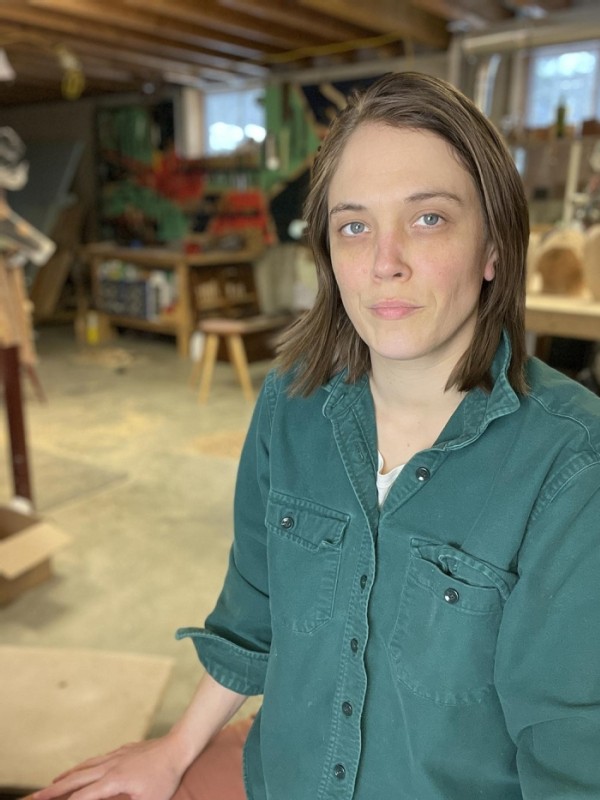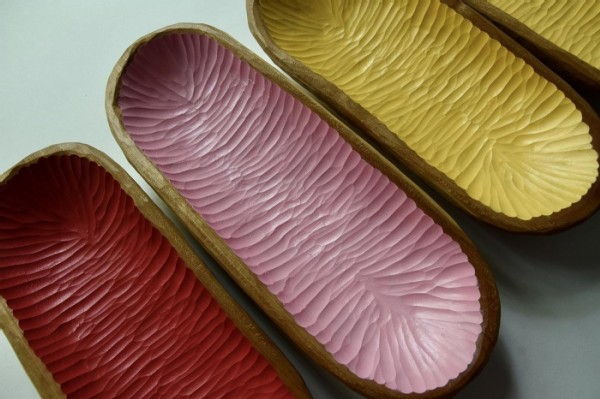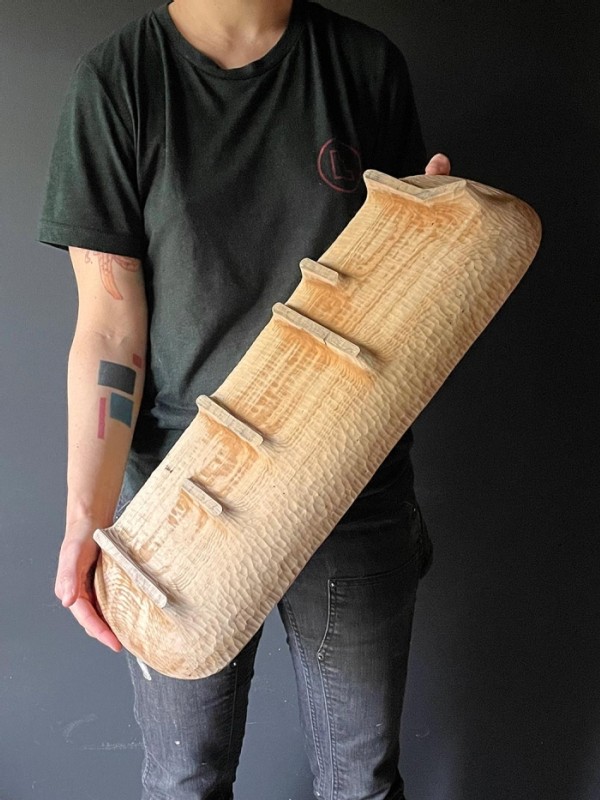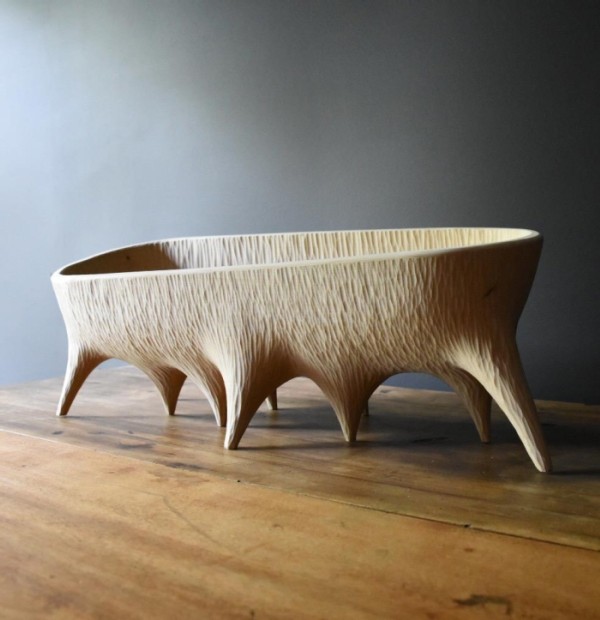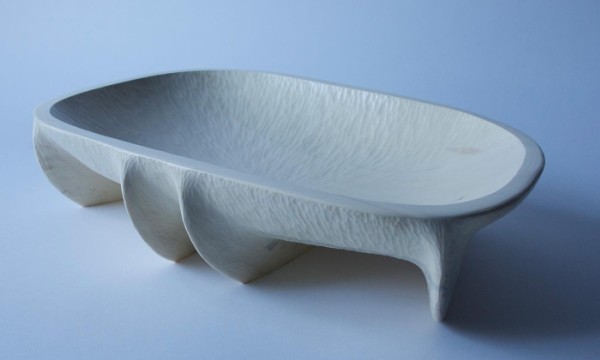For wood sculptor Danielle Rose Byrd, the creative process is much like a conversation, an intuitive back-and-forth with the block of wood she will carve into a work of art. She considers the flow of its grain, a potential crack, or a knot where a branch once grew as she works to reveal the shape that lies within.
“Hand carving involves a high degree of risk and loss,” she explained. “At every turn you can make a grand mistake. Sometimes you have to pivot to redesign everything. It cultivates a lot of resilience. It’s hard to let go of those things. Where someone may see a complete failure, I see it as a pause. I leave it in the shop for months. I look at it as I pass by. Eventually I say, ‘So that’s where it needs to go.’”
Most of her objects, fashioned in her Bar Harbor, Maine, workshop – primarily from fallen or pruned branches her friends and neighbors offer – are functional bowls or spoons. Some take shape as pure works of abstract art. Recently, she has been drawn to carving large wooden sculptures that may find homes in private or public gardens. Byrd isn’t convinced that each piece requires a purpose.
Her carved bowls are unique, full of life, and very much in demand by collectors. It’s easy to see why; the pieces are functional works of art. Some have all-natural finishes, while others are painted with vibrant oil paints in rich colors such as golden sunlight, blue skies, pink berries, or charcoal black. Byrd finishes the interior of each piece naturally, using food-safe pure tung oil.
The distinctive marks left by her hand tools leave an intentional texture resembling patterns found in nature: ripples made by light breezes over a lake’s surface, a bird’s feathers, cirrus clouds. The surfaces seem to flow and wave according to the whims of light playing on the piece.
Byrd’s journey to becoming a woodworker started as a child. She grew up in a paper mill town in Maine, a gritty industrial world within a serene natural one. Her father was a carpenter, and as a youngster, Byrd was constantly picking up materials to see what she could make from them.
“It’s a classic story,” she said. “I was the kind of kid who liked to do things with my hands.”
She attended College of the Atlantic in Bar Harbor, where she studied music and tapped in to many different areas of learning. She also befriended members of the school’s grounds crew, who were charged with maintaining and repairing assorted equipment and buildings, and found herself comfortable in an environment filled with tools. Byrd began a work-study program at the buildings and grounds department. One of her senior projects entailed making a handmade fiddle from the grounds crew’s collection of miscellaneous wood. From her scraps she also fashioned spoons and other objects, and by the end of her academic track, working with wood was her career goal.
“At the time I was carving with 100 percent the wrong tools,” she said. “Crude spoons took me forever. I knew what I wanted to do. But given my resources and huge student loan debt, I didn’t know how I was going to work it out.”
She graduated in 2005 and took jobs that helped her meet her financial obligations. In 2014, she landed a job at Lie-Nielsen Toolworks, which makes hand tools for woodworkers and furniture makers. She traveled to trade shows, where she demonstrated how to use the tools. She started to make connections with other woodworkers, including Peter Follansbee, who specializes in green woodworking and 17th-century joinery and also carves bowls. His utensil and bowl carvings were similar in many ways to Byrd’s work.
“Once I understood and I knew someone else was carving like me, I was better able to aim my efforts to get the results I wanted,” Byrd explained. And what she wanted was to make a living from her carving.
It was around 2011 when Byrd started to approach that goal. Maybe I can get back in to this slowly, she thought at the time. “What would be an accessible point?” she said. “I knew free material was a necessity and carving that required very few tools. I knew I wanted to do more, but I knew I couldn’t facilitate that given the resources I had. I just kept carving. Spoons and other utensils became my way in.” Later, she added bowls.
Today, Byrd sells her utensils, bowls, and sculptures at daniellerosebyrd.com. She also enjoys helping budding carvers on their journeys. To that end she authored the book, The Handcarved Bowl: Design & Create Custom Bowls from Scratch (Blue Hill Press, 2021).
In the introduction Byrd writes, “Bowl carving gives unparalleled insight to the basic properties of wood behavior, intimate knowledge of how tool edges interact with grain, and the importance of learning to reframe failure as one of the key steps of building deep understanding.”


